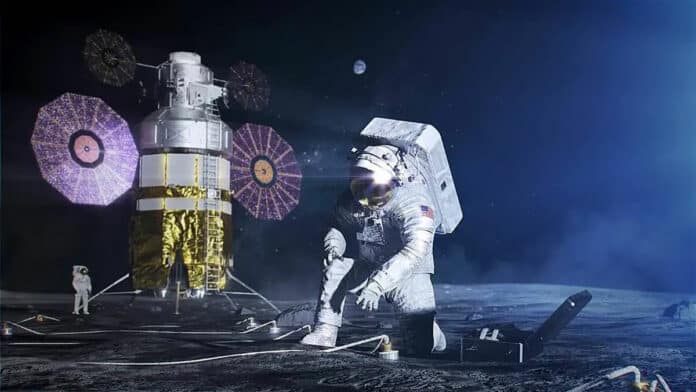NASA and Japan’s space agency are joining forces to explore the surface of the Moon together. The two agencies recently announced “a shared goal for a Japanese national to be the first non-American astronaut to land on the Moon on a future Artemis mission, assuming important benchmarks are achieved.”
On April 9, the agreement to collaborate on long-term human exploration of the Moon through Artemis missions was signed by NASA Administrator Bill Nelson and Japan’s Minister of Education, Culture, Sports, Science, and Technology (MEXT), Masahito Moriyama.
Japan will design, develop, and operate a pressurized rover for crewed and uncrewed exploration on the Moon. NASA has agreed to provide the launch and delivery of the rover to the Moon and two opportunities for Japanese astronauts to travel to the lunar surface. This pressurized lunar rover will allow astronauts to travel longer distances and work for extended periods on the Moon.
This agreement was signed on April 9 at NASA Headquarters in Washington, with Nelson, Moriyama, and JAXA (Japan Aerospace Exploration Agency) President Hiroshi Yamakawa participating.
“The quest for the stars is led by nations that explore the cosmos openly, in peace, and together. This is true for the United States and Japan under the leadership of President Biden and Prime Minister Kishida,” said Nelson. “America no longer will walk on the Moon alone. With this new rover, we will uncover groundbreaking discoveries on the lunar surface that will benefit humanity and inspire the Artemis Generation.”
The enclosed and pressurized rover that Japan plans to design, develop, and operate will allow astronauts to travel farther and conduct scientific experiments in various geographically diverse areas. It will act as a mobile habitat and laboratory for astronauts to live and work in for extended periods, making it an important addition to future lunar missions.
The rover will be capable of accommodating up to two astronauts for a period of up to 30 days as they explore the area around the lunar South Pole. NASA intends to use the pressurized rover on Artemis VII and subsequent missions for approximately ten years.
“Under the partnership stronger than ever, we will drive the initiative together with JAXA, including the development of the pressurized rover that vastly extends the exploration capability on the lunar surface, to realize the shared goal for Japanese and American astronauts to, together, explore the moon,” said Moriyama.
NASA and Japan have been collaborating on various space missions. For example, JAXA collaborated with NASA on the X-Ray Imaging and Spectroscopy Mission (XRISM), launched in September last year.
Japan is contributing to some of NASA’s significant upcoming missions, such as the Dragonfly mission, which will use robotic rotorcraft to explore Titan, Saturn’s largest Moon. Additionally, JAXA is providing technical components for NASA’s next big telescope, the Nancy Grace Roman Space Telescope.
Recently, NASA announced its plans to deploy the first space station orbiting the Moon, Gateway. Japan will be responsible for furnishing Gateway with environmental control and life support systems while handling cargo transportation.
